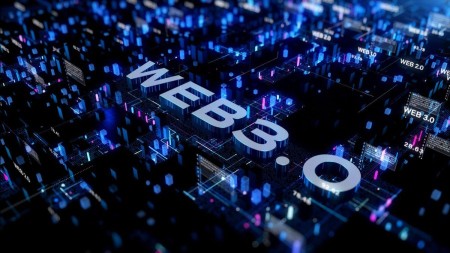
Web 3 is the third generation of the internet that is currently being developed. Through the use of technologies like artificial intelligence (AI), machine learning (ML), big data, decentralized ledger technology (DLT), and others, websites and apps will be able to process information in a smart, human-like manner.
If we consider the shift from Web2 to Web3, Web3 is currently still a rather unclear notion that could take 5–10 years to develop. In reality, a lengthy Web2.5 era in which Web2 platforms progressively adopt important Web3 protocols may very well be what we initially witness.
There is broad agreement among experts that, in order to achieve proper decentralization, blockchain-powered applications will be essential to its success, while AI and ML tools will help automate and expand it as necessary in order for it to become a semantic web.
Tim Berners-Lee, the creator of the World Wide Web, originally referred to Web3 as the Semantic Web. Its goal was to create a more independent, intelligent, and open internet.
The definition of Web3 can be enlarged to mean that data would be connected in a decentralized manner. This would be a significant improvement over Web 2.0, where data is primarily held in centralized repositories and is thus vulnerable to manipulation or worse.
Also Read: With Large Firms Cutting Down Staff, Tech Talent Migrates To Web3 Firms
Users and machines will be able to communicate with data as well. Programs must be able to comprehend information theoretically and culturally for this to happen, though. In light of this, semantic web and artificial intelligence (AI) technologies are the two pillars of Web3.
What Is the Use of Web 3?
Although Web3 technology is still in its infancy, it already has a variety of unique application cases. The current top 5 are as follows:
Metaverse
In 2022, the idea of the metaverse dominated news stories about technology. Facebook even changed its name to Meta and invested billions in research and development to claim this new virtual space before anybody else. Zuck, don’t move too quickly. Investors and customers are not particularly excited about Facebook’s aspirations for the metaverse, as evidenced by Meta’s Q3 2022 earnings and plummeting stock price.
The metaverse, which can be conceived of as a 3D version of the Internet and a digital depiction of the real world, is essentially a virtual environment. Users can navigate via PCs, smartphones, or VR/AR headsets, offering a completely immersive experience that will gradually straddle the lines between reality and virtual reality.
Building all of this will be extremely expensive, which is why well-funded huge tech companies like Facebook and Google have made significant early investments in order to dominate the industry eventually.
The metaverse idea put forth by Web3 is radically different; it is totally open to everyone, decentralized, interoperable, and open-source, and it will appropriately compensate creators and security contributors.
Blockchain gaming
The play-to-earn craze, which promised gamers the chance to make money from playing games, began with the launch of Axie Infinity in 2021. Subsequently, tens of thousands of other imitative blockchain-powered games appeared, offering players substantial incentives in the form of native tokens that initially surged in value before continuing to decline.
Even if the high-risk sector of cryptocurrency gaming was destroyed by the bear market, the game is still not done. While Web2 gaming behemoths like Epic Games are distributing Web3 games, a number of high-quality crypto games are still in development. When developers figure out how to make blockchain gaming enjoyable and engaging for gamers, expect a significant resurgence.
Designer Economy
One of the main complaints about Web 2.0 behemoths like Facebook, YouTube, and Spotify is that they don’t fairly compensate artists and creators for the audience that their platforms attract.
With Web3, creator communities of authors, musicians, designers, and developers will finally be able to communicate with their audiences and supporters without the use of middlemen. This will enable them to get the majority of any profits made during the procedure.
Decentralized Autonomous Organisations (DAOs)
There has been much discussion on the potential of decentralized autonomous organizations (DAOs) to establish a fully democratic and self-governing organization that will be immune to outside interference and geographical constraints.
DAOs have drawn criticism for being linked to governance tokens that will eventually lose all of their value, but as long as projects know how to arrange them properly, they have a chance to become the dominant organizational form.
Financial Decentralization (DeFi)
Midway through 2020, the value of decentralized finance (DeFi) skyrocketed, giving cryptocurrency users the freedom to freely invest, borrow, lend, trade, and stake crypto assets. Although DeFi has its share of security problems, including breaches and frauds, the sector gives Web3 the chance to sign up potentially billions of people who have been overlooked by traditional financing companies like banks.
In order to motivate their consumers, prominent Web3 protocols will surely leverage DeFi products and services.







